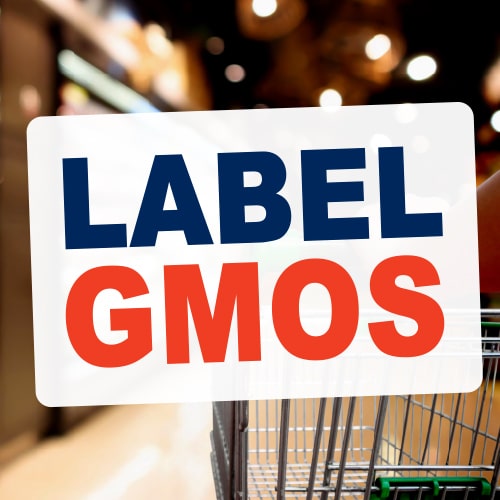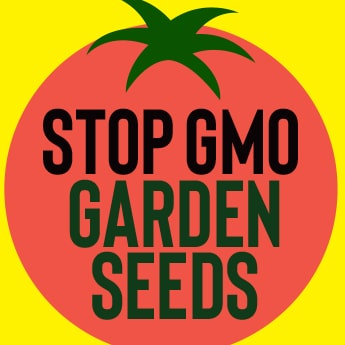For 20 years, the world’s biggest seed and pesticide companies have profited from selling genetically modified (GM, also called genetically engineered) seeds that are tied to their brand name herbicide formulations. In fact, almost 100% of the GM crops now grown in Canada are genetically modified to be herbicide-tolerant; 88% globally. This reality is far from the promises that were made for this powerful new technology.
Canadians are still being asked to throw their support behind genetic engineering in the name of innovation and progress, to solve the biggest problems of our time. We are being asked to forgo precautionary regulations and mandatory GM food labelling to clear the way, and to direct significant resources away from seed systems that serve organic farmers. Our experience with genetic engineering provides some important lessons about the impacts of focusing on the potential of techno-fixes.
GM’s Solution is More Pesticides
Five GM crops are grown in Canada: corn, canola, soy, white sugar beet, and a very small amount of alfalfa. All are herbicide-tolerant except for a few GM sweet corn varieties that are only insect-resistant. GM herbicide-tolerant crops are grown on 409.7 million acres around the world and most of this is GM glyphosate-tolerant soy grown for animal feed, processed food ingredients and fuel or other industrial uses. Seventy seven percent of the world’s soy crop is now herbicide-tolerant. This GM soy cultivation relies on pesticides derived from petrochemicals and it is literally eating into the Amazon.
Instead of reducing pesticide use, GM crops have protected the market share for brand name herbicide formulations such as Monsanto’s Roundup. In Canada, herbicides sales have increased by 199% since the introduction of GM crops (1994-2016).
GM crops have facilitated a recommitment to herbicide use, and the overuse of glyphosate in particular. At first, some herbicide-tolerant crops helped farmers more efficiently apply herbicides but ultimately their use sped up and entrenched the existing pesticide treadmill, with more chemicals and more GM traits stacked together. It is not enough anymore to sell glyphosate-tolerant seeds—now GM seeds are marketed with tolerance to multiple herbicides at once, to deal with glyphosate-resistant weeds.
The evolution and spread of glyphosate-resistant weeds since 1996 is now rendering glyphosate herbicides redundant. In 2010, Monsanto began offering rebates to farmers when its herbicide failed to kill all their weeds. Now DowDupont (Corteva) is warning that weeds with resistance to multiple herbicides may prevent some farmers from growing certain crops altogether.
The corporate response to the failure of GM herbicide-tolerant cropping systems is to sell more products into that same system. In 2017, Monsanto launched its Roundup Ready™ Xtend™ dicamba-tolerant plus glyphosate-tolerant GM soy and, in 2018, DowDupont sold its GM corn Enlist™ that is tolerant to 2,4-D plus glyphosate. Such stacking of GM traits for tolerance to multiple herbicides is now the norm and is a doubling down on chemical agriculture.
The contrast between this reality and the grand vision for genetic engineering warns that even the most exciting science can have serious limitations in real world application. The science of genetic engineering itself has limitations but the promise is also limited by who owns and controls the technology.
Corporate Techno-Solutions to the Rescue
Rather than provide innovative solutions, GM has, so far, propped up an existing production model that relies on expensive farm inputs sold by the biggest seed and pesticide companies in the world. Until 2016, the global market for GM crops was dominated by six companies, Monsanto, Dupont, Syngenta, Dow, Bayer and BASF, that, together, controlled around 75% of the global pesticide market and 62% of the commercial seed market. After a wave of mergers, these markets are now controlled by just four companies: Bayer bought Monsanto, Dow and Dupont merged, ChemChina bought Syngenta, and some of Bayer’s and Monsanto’s business was sold to BASF. This corporate concentration has also eliminated or constrained non-GM seed options for some farmers.
It is important to evaluate the promises that were made because they are still being used to argue for removing regulations and because these same promises are being repeated with the advent of new genetic engineering techniques. The techniques of gene editing, such as CRISPR, are being hyped with the promise of achieving everything that the earlier techniques could not. However, promoting a new technology relies on looking to the promise around the corner and overpromising is often also used to build investment interest. The danger is that we are building a vision for our future based on corporate investment strategies that often pull solutions out of thin air, instead of looking to the ground where farmers are already innovating.
The GM solution continues to fail. At the end of 2018, the Government of South Africa rejected Monsanto’s request to approve GM drought-tolerant corn because the company’s data was insufficient to demonstrate that the corn was actually drought tolerant. Also, while the famed Vitamin-A enriched GM “Golden Rice” is getting closer to market, it still contains less than 10% of an equivalent amount of beta-carotene in carrots. Meanwhile, groups in the Philippines argue that, “securing small farmers’ control over resources such as seed, appropriate technologies, water, and land is the real key to improving food production and eradicating hunger and malnutrition.”(1) Such complicated solutions do not, however, provide the opportunity to sell new products.
Companies are promising technological solutions to “feed the world” and halt climate change. Such techno-fix silver-bullets are compelling—they appear simple and elegant—but if we rely on corporations to develop the solutions to our problems, we will be buying our solutions, if they ever materialize. We can also ill afford to wait for the perfect technology to solve our problems. This approach invites dependence and inertia.
In the meantime, organic solutions are already in the ground. Further agroecological progress is hindered by a system that is set up to facilitate and promote the GM techno-fix rather than support locally adapted seed and farmer control. Faced with the moral imperative to take urgent action to stop climate change, we need to support the nimble and diverse solutions already available to us—solutions in the hands of farmers in Canada and around the world.
References:
GRAIN, MASIPAG, & Stop Golden Rice! Network. (2018). Don’t get fooled again! Unmasking two decades of lies about Golden Rice. grain.org/article/entries/6067-don-t-get-fooled-again-unmasking-two-decades-of-lies-about-golden-rice





